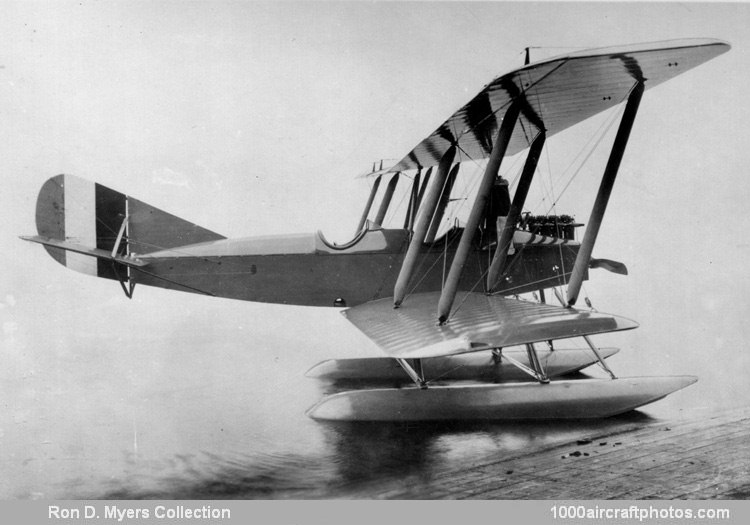08/31/2015. Remarks by Johan Visschedijk: "Fifty Model 5 two-seat aircraft were ordered by the US Navy as primary trainers following evaluation of two Model 3s (designated C-5 and C-6) which can be considered the military prototypes. Since the production models were practically identical, Boeing retained the designation of Model C, supplementing it with the numbers of the Navy-assigned serials (A-650 to A-699) for each individual aeroplane: C-650 to C-699. The Navy ordered one additional aircraft (A-4347) for test with a single main float installation and a Curtiss OXX-6 engine. This was identified by Boeing as the C-1F (meaning Model C with one float). Before the C-1F was completed, the single float installation was tested on the rebuilt Model 2 (C-4), that became the C-11.
One additional Model C was built for William E. Boeing, and since it followed the last Navy trainer through the shop, it was logically called C-700. The C-700 was modified slightly in December 1918 and was redesignated CL-4S, indicating a Model C with the new four-cylinder Hall-Scott L-4 engine. This aeroplane was used by William E. Boeing (right) and Edward Hubbard (left) to inaugurate the first International Contract Air Mail Service between Seattle and Victoria, British Columbia, on March 3, 1919, where transpacific mail was delivered to and picked up from ships a day out of Seattle. Subsequently the ailerons were reduced in size to straighten the trailing edge of wing. Since the CL-4S was operating in Canada at a time when Canadian aircraft had to carry registrations but US aircraft did not, it was registered as G-CADR (G for Great Britain, CA for Canada) for the initial part of its mail service, later becoming N-CADR under an early US registration system.
The Navy declared all the Model Cs surplus after WW I, taking full-page ads in the aviation magazines to advertise them and quote the original price of $10,250 each. About the first thing the private owners did was to replace the highly unreliable Hall-Scott engines with either 90 hp Curtiss OX-5s or 150 hp Wright-Hispano surplus engines. Several Cs were still flying when US registration became mandatory in January 1927, and at least two were painted in German WW I markings and crashed for the film 'Dawn Patrol' in 1931."
